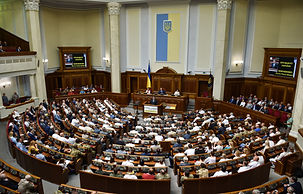
Early Times
Volhynia is a historic region in the borderlands of Central and Eastern Europe. Volhynia changed hands numerous times throughout history and been divided by competing powers.
After 1569, it was organized as a province of the Polish–Lithuanian Commonwealth, and increasing numbers of Jews and other nationalities started living there. Ethnic Ukrainians were always the majority. After the three partitions of Poland in the late 18th century, Volhynia became a separate administrative unit in the Russian Empire.
After decrees by Catherine the Great, the Pale of Settlement was the area in Western Russia where Jews were forced to live. All of Volhynia was part of the Pale. Even within the Pale, Jews were not permitted to live in cities until the First World War. As a result, Jews were often the majority of the population in small and mid-sized towns.


The Brutal Times
Before the end of the 19th century, Volhynia was a multi-ethnic province in the Pale within the Russian Empire. The first half of the 20th Century constituted an uninterrupted series of wars, revolutions, famines, and genocides. Every ethnic group was victimized in one brutal way or another, often by deportation or the necessity of fleeing to find some form of relative safety. But nearly all of the Jews in Volhynia, as in some other nearby places, were eradicated in what has become known as the Holocaust by Bullets. Altogether 1.5. to 2 million Jews were killed this way. They were shot into pits, in forests, fields and ravines, in territories of the Soviet Union, Poland and the Baltic states. In Volhynia Einsatzgruppe C (one of the Nazi mobile killing units), along with local Ukrainian collaborators carried out the massacres.




A Pause in the Brutal Times
By 1933, my parents left Volhynia and moved to Warsaw to begin their married life in the big city--Warsaw. They lived a heady bourgeois life as young professionals, going out with friends most nights to theater, or playing cards, or just socializing in the cafes of the city. On weekends they went on outings to lakes and mountains. After 5 years, they decided to have a child. Nine months later, the Luftwaffe opened the German attack on Poland with operation Wasserkante, an air attack on Warsaw. It was September 1,1939.
On September 5, they fled with their baby in an open truck and only the clothes on their backs.



Changes
I titled the project "Borderlands" because it was partly about a particular area in the borderlands of Eastern Europe between Russia and the West. "Bloodlands" would have been an equally
apropos title, then and now. Decades before the start of the project, most of the Jewish population of the borderlands had been eradicated. Their murderous demise in 1941 and 1942 became known as the Holocaust by Bullets. Recently, the Borderlands project demanded revision to include mention of the current Russian invasion and other events in Ukraine since the original filming in 2005, including the election of a charismatic young Jewish president who had risen like a phoenix from the ashes. Fourteen years before the start of the project, Ukraine had formally dismantled the yoke of Soviet oppression. For the first time in their history, Ukrainians became citizens of their own nation state, something to which they had sought for at least a century. From the beginning of independence in 1991, there was ongoing conflict between those Ukrainians who sought political affiliation with Russia in the East and those who looked westward, aspiring to develop Ukraine into a Western-style, liberal democracy. This film project was started just after the Orange Revolution of 2004, when it seemed Russian backed leadership and corruption might be waning. Still, robust and unmistakable vestiges remained: statues of Lenin, sacred celebration of the anniversary of the "liberation" of Ukraine by the Soviet Army, newly minted billionaire oligarchs in the midst of economic hardship for most everyone else, many Ukrainian citizens who still struggled to speak Ukrainian, and more. The Orange Revolution ultimately proved ineffective. But after 2014, the Russian occupation and annexation of Crimea accelerated rather than stopped what was already underway: the maturing of a modernized Ukraine, having a patriotic citizenry confident of their identity as Ukrainians, regardless of ethnicity. Two-thousand-seventeen brought the election of Volodymyr Zelensky as president. In the past anti-Semitism, sometimes murderous, was a regular part of Jewish life in the Ukraine, regardless which colonial power was the occupier. Ethnic Ukrainians viewed Jews either as privileged minions of the Polish nobility, or as brutal Bolsheviks partly responsible for the Holodymir, the Soviet engineered famine in the 1930's that killed millions of Ukrainians. This native anti-Semitism may have enabled the swiftness with which the Jewish population was murdered in 1941-1942. Without the collaboration of Ukrainian police and even some ordinary Ukrainians, wiping out Jews in town after town might at least have taken more time. Perhaps the long absence of Polish landlords, Bolsheviks and Jews--and the birth of an independent Ukraine served to devitalize the tradition of anti-Semitism. The small fraction of remaining Jews is now apparently welcome to hold positions of power in Ukrainian government. On February 24, Vladimir Putin made a felonious miscalculation. He lacked an understanding, willfully or otherwise, that even most Russian speaking Ukrainians viewed themselves first as Ukrainian citizens, and that trying to topple Zelensky by labeling him a Nazi was uniquely grotesque. Perhaps Putin had also forgotten that Kiev, a much older city than Moscow, was the capital of the Eastern Slavs in ancient Kievan-Rus, and not the other way around.

